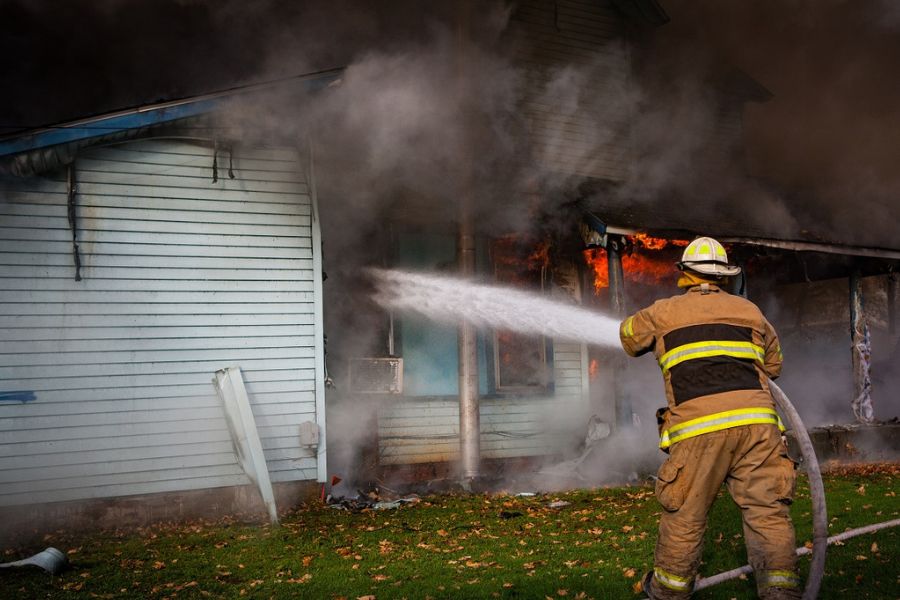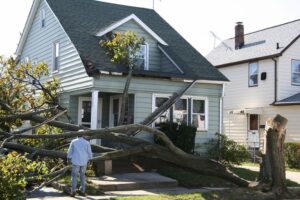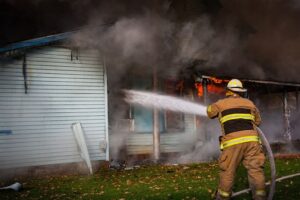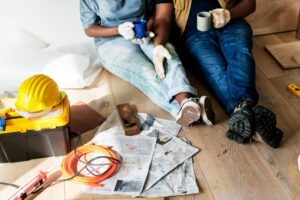Experiencing a fire in your home is devastating. Even after the flames are out, the aftermath, including smoke damage, soot, lingering odors, and structural harm, can make your property unsafe. The key to effective recovery is knowing whether you need smoke damage restoration or full fire damage repair.
This guide will help you understand the differences, the best restoration approaches, and why professional insurance restoration services in Central Florida, USA, is essential for a safe and thorough recovery.
Understanding Smoke Damage vs. Fire Damage
What is Smoke Damage?
Smoke damage isn’t always visible, but its effects can linger long after a fire. It includes:
- Soot and ash residue on walls, furniture, and appliances.
- Strong, persistent odors that penetrate fabrics and porous materials.
- Corrosion and discoloration on metals, electronics, and plastics.
Even a small fire can spread smoke throughout your home, affecting areas far from the original flames. Smoke damage restoration in Central Florida, USA, focuses on deep cleaning, deodorizing, and preventing long-term harm.
What is Fire Damage?
Fire damage is more severe and involves:
- Structural weakening of walls, floors, and support beams.
- Charred materials that must be removed and replaced.
- Water damage from firefighting efforts, leading to mold growth.
Fire damage repair goes beyond cleaning, it requires rebuilding and ensuring the home is structurally sound.
Key Differences in Restoration Approaches
1. Smoke Damage Restoration Process
Since smoke spreads quickly, professionals follow a detailed process:
Step 1: Inspection & Assessment
- Experts identify affected areas using thermal imaging and air quality tests.
- They determine the type of smoke (wet, dry, or oily) to choose the right cleaning methods.
Step 2: Ventilation & Air Scrubbing
- Industrial fans and air scrubbers remove smoke particles from the air.
- Ozone generators or thermal fogging may be used to neutralize odors.
Step 3: Soot & Residue Removal
- Specialized sponges, dry cleaning agents, and HEPA vacuums clean walls, ceilings, and furniture.
- Electronics and delicate items are handled carefully to prevent further damage.
Step 4: Deodorization & Sanitization
- Professional-grade deodorizers eliminate stubborn smells.
- Antimicrobial treatments prevent mold and bacteria growth.
2. Fire Damage Repair Process in Central Florida, USA
Fire damage requires a more extensive approach:
Step 1: Safety Inspection
- Structural engineers check for weakened beams, cracked foundations, and hazardous materials.
- Utilities (electricity, gas, water) are inspected for safety before restoration begins.
Step 2: Debris Removal & Demolition
- Burnt materials (drywall, insulation, flooring) are safely removed.
- Hazardous substances (asbestos, chemicals) are disposed of properly.
Step 3: Water Extraction & Drying
- If water was used to extinguish the fire, professionals use pumps and dehumidifiers to prevent mold.
Step 4: Reconstruction & Repairs
- Damaged walls, roofs, and flooring are rebuilt.
- Paint, flooring, and fixtures are restored to pre-fire condition.
Which Restoration Strategy Do You Need?
When to Choose Smoke Damage Restoration in Central Florida, USA
- The fire was small and contained (e.g., kitchen grease fire).
- Visible soot and odor are present, but no major structural damage exists.
- Electronics, furniture, and personal items need deep cleaning.
When to Choose Fire Damage Repair
- Walls, ceilings, or support beams are charred or weakened.
- Electrical wiring or plumbing systems are compromised.
- Large sections of the home require demolition and rebuilding.
Why Professional Smoke and Fire Damage Help is Essential
Attempting DIY smoke or fire damage cleanup can lead to:
- Health hazards – Soot contains toxic chemicals that are dangerous when inhaled.
- Hidden damage – Smoke can seep into HVAC systems, causing long-term odor issues.
- Insurance complications – Improper cleanup may void insurance claims.
Tools Professionals Use
- Thermal imaging cameras – Detect hidden heat damage.
- Hydroxyl generators – Break down odors at a molecular level.
- Industrial-grade dehumidifiers – Prevent secondary water damage.
Preventing Future Smoke & Fire Damage
Fire Prevention Tips
- Install smoke alarms on every floor and test them monthly.
- Keep fire extinguishers in the kitchen, garage, and near fireplaces.
- Avoid overloading electrical outlets and replace frayed wires.
- Store flammable liquids (gasoline, paint thinner) in a safe, ventilated area.
Minimizing Smoke Damage After a Fire
- Ventilate the area – Open windows and use fans to circulate air.
- Cover unaffected furniture – Prevent soot from settling on upholstery.
- Avoid wiping soot – Improper cleaning can smear and worsen stains.
Insurance & Fire Damage Claims
Filing an insurance claim after a fire can be complex. Follow these steps:
- Document the damage with photos and videos.
- Contact your insurance company immediately.
- Keep receipts for temporary repairs (hotel stays, emergency board-ups).
- Hire a licensed restoration company – Insurers often prefer working with professionals.
Final Thoughts
Whether you’re dealing with smoke damage restoration or fire damage repair in Central Florida, USA, acting quickly is critical. Smoke can cause lasting harm if not cleaned properly, while fire damage requires structural expertise.
For the best results, hire a certified restoration company such as Florida State Construction LLC, that specializes in both fire and smoke damage cleanup. We have the tools, training, and experience to restore your home safely and efficiently.
Need Expert Fire & Smoke Damage Help? Don’t wait, contact us today to get in touch with a professional restoration team. The sooner you act, the better your chances of a full recovery.
By understanding the differences between smoke damage and fire damage, you can make informed decisions and protect your home for the future.





